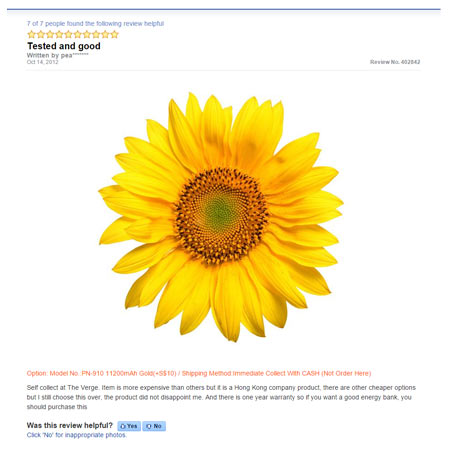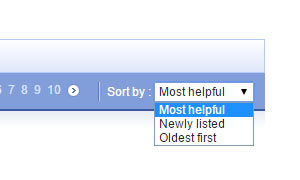Dark Patterns
A Dark Pattern is a type of design pattern used to trick you into doing things that you otherwise would not want to, like buying junk you don’t need. Dark Patterns are not accidents. They are intentionally used to exploit your weaknesses, and they do not have your best interests in mind.
Before we go on, here’s an important caveat: There is a very fine line between design patterns and dark design patterns. It doesn’t help that ethics and morals define this line as well; it shifts according to our various belief systems.
With that in mind, let’s begin!
Social proof
This is a maxim laid down by Chris Nodder in his book, “Evil by Design”. Here is a snippet of his argument:
“If we see a restaurant full of happy people, we’re more likely to think that eating a meal there would be worthwhile… [this is] why restaurants seat people at the window seats first thing in the evening.”
Humans are social. We’re easily influenced by people — even if they are total strangers. Sometimes we find ourselves taking out our phones, swiping between screens for no reason at all. Or so it seems.
Our anxiety to see that little red notification badge reveals our desire for continual communication, emotional comfort and reassurance. Facebook is so popular because it’s like a giant chat room where we’re connected to each other all the time. That’s why we love it.
Don Norman, an academic in the field of cognitive science, design and usability engineering, once reached out to readers on his website for their thoughts about Instant Messaging (IM). He shares a particular response in his book, “Emotional Design”:
“The real power of IM isn’t the message (though that is a key attribute), but it’s the presence detection. Knowing that someone ‘is there’.”

Facebook friend status
Social Proof works because we seek acceptance in our communities. We find safety in numbers and have no qualms modifying our behaviors so we can blend in. This principle undergirds a large number of design patterns in use today.
Personal Messages
Personal messages hit home and hit hard. A glowing review of MacDonald’s new Grilled Chicken written by your somewhat health-conscious friend is going to be more effective than one written by MacDonald’s PR guy. E-commerce platforms like Amazon, Rakuten and Qoo10 take a small cut out of every sale by its merchants. Increasing sales volume means more profit, and one way to roll in the dough is to get people to write reviews.

A 10,000 mAh Sunflower
I found this cute little review on Qoo10 while searching for power banks. Why would anyone put a stock image of a sunflower in a review about portable battery chargers? There has to be some sort of a rewards program for submitting photo reviews. And sure enough, this turned up in their FAQ page:

Two times the reward for posting a photo review? Sweet.
Is Qoo10 onto something here? I believe so. Photos make reviews much more believable. We pick up visual cues from a photo that give it a human touch; like low contrast, awkward cropping and blurry images. Even the shadow of somebody’s head suggests the physical position of him taking the photo. These cues make us believe that the reviews are not fake, bogus or written by shills.

I did not get this for free and I am totally honest
The strength of social proof depends on how closely we relate to the author — the more similarities we find, the more we trust the message. In this case, even a weak social proof is enough to tip the balance. It doesn’t matter if the reviews were written by total strangers — they could even be completely fake, and we would still drink it all up.
Repeating messages
Imagine yourself walking down a boulevard on a Friday evening, soaking up the sights and sounds and winding down for the weekend. Suddenly, you notice a guy farther up ahead looking up behind you. You think nothing of it, and carry on walking. Then, you notice another person looking up in the same direction. And another. Then another. At this point in time, you feel an irresistible urge to turn around.
But why? You had no reason to believe that there was anything of concern to you, until more people started turning their heads. Just a mere increase in the number of times a message is repeated results in more credibility.

I spent 4 years in design school learning how to draw graphs in Photoshop
Now, back to Qoo10. The reliability of an electronic product is one of the top concerns of consumers — especially for a potential fire hazard like a portable battery charger. If you are shopping for one, you would be wise to find out if such a product is safe to use. You can do so by looking for bad reviews to gauge the chances of having one exploding in your front pocket. Remember Ben? You don’t want to be Ben.
Unfortunately, Qoo10 makes it hard for you to sift out bad reviews. On purpose. This drums positive messages about the product into your head. It makes you feel safe and more willing to part with your money.

A “Lowest Rating” filter rule is conveniently left out
You might argue that it is never in the business owner’s interests to show people bad reviews. You are right. However, if you bought a faulty product from one of Qoo10’s merchants, who would you blame? Remember, Qoo10 knowingly made it hard for you to see the bad reviews.
Accreditation and Endorsement
Have you ever fact-checked against any sort of certification or awards claimed by a product? Not much, I suppose. Most companies wouldn’t dare to pull a fast one for fear of getting into trouble with the law. Somehow, we seem to have implicit trust in endorsements. We lower our guard and feel more confident about a product when a seal of approval is slapped onto it.
This effect is more pronounced when we are buying unfamiliar things. For example, people who are not computer wizards trying to buy antivirus software. In such a scenario, most people would lean towards products with more accreditation, even if they have absolutely no idea who accredited them, how the tests were conducted and what they actually mean.

We’re proud to have received an award for being compatible with Windows 7
The worst kinds of offenders are people who do this:

What is this I don’t even
A very thin line
I mentioned early on that it can be hard to distinguish between good and insidious usage of design patterns. Is Qoo10 evil for hiding bad reviews from you? After all, good reviews do help you sleep better at night with your purchase. You might even like what you buy better. Most of the time, these patterns are extremely subtle — trying to recognize them while shopping would probably make you feel miserable!
The least you can do though, is to question how much trust you are putting into reviews you read. At the end of the day, we are still going to rely on them in one way or another. Just be careful not to believe everything you read.
Remember: businesses are out to make profits, not to care for your best interests.